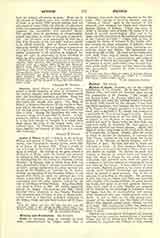

Aedh OF KILDARE, King of Leinster, an Irish saint, commemorated by Colgan under date of January 4; but much obscurity attaches to his life-work. The “Annals of the Four Masters” and the “Annals of Ulster” agree in the account of this monarch, who resigned his crown and eventually became Bishop of Kildare. Under the name of Aidus, a latinized form of Aedh, his name is to be found in several martyrologies. The year of his death was 639, according to the corrected chronology of the “Annals of Ulster.” Colgan tells us that he resigned the throne of Leinster in 591 (really, 592), and entered the great monastery of Kildare, where he served God for forty-eight years, becoming successively abbot and bishop. His episcopate was from about 630 to 639.
He must not be confounded with Aedh Finn, king of Ossory, known as “Aedh the cleric,” who was a contemporary, and resigned the throne of Ossory for a monastic cell. St. Aedh of Leinster is styled Aedh Dubh, from his dark features, whilst Aedh of Ossory was fair, hence the affix (finn fionn=fair).
Another St. Aedh is venerated on May 3.

